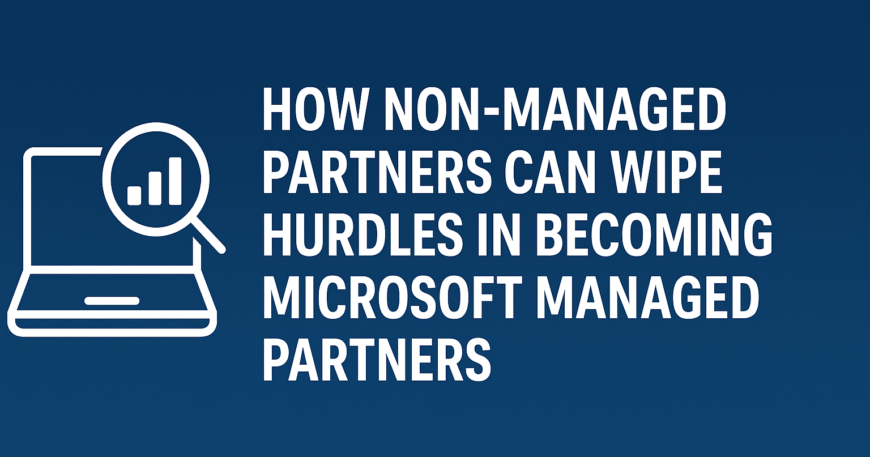Becoming a Microsoft Managed Partner is a significant milestone for any organization in the Microsoft ecosystem. It opens doors to deeper engagement, strategic support, co-selling opportunities, and access to exclusive resources. However, for many non-managed partners, the path to this status can seem challenging. The good news? With the right approach, these hurdles can be effectively addressed.
Understanding the Managed Partner Status
A Microsoft Managed Partner is one that receives direct engagement from Microsoft through a Partner Development Manager (PDM). These partners are typically high-performing, strategically aligned, and demonstrate strong potential for growth and impact in the Microsoft ecosystem.
Common Hurdles Faced by Non-Managed Partners
- Limited Visibility to Microsoft Teams
- Lack of Strategic Alignment
- Insufficient Co-Sell Readiness
- Low Partner Scorecard Metrics
- Unclear Value Proposition
Strategies to Wipe Out These Hurdles
1. Strengthen Your Microsoft Partnership Profile
Ensure your organization’s profile on Partner Center is complete, up-to-date, and showcases your competencies, solutions, and customer success stories. Highlight your specializations and certifications to stand out.
2. Focus on Solution Development and IP
Microsoft values partners who build repeatable solutions and intellectual property (IP). Invest in developing cloud-native, scalable solutions that align with Microsoft’s strategic priorities like Azure, Modern Work, Security, and AI.
3. Achieve Microsoft Designations and Specializations
Work towards earning Solutions Partner Designations and Advanced Specializations. These not only boost credibility but also improve your visibility in Microsoft’s internal systems.
4. Engage in Co-Sell Activities
Register your solutions in the Commercial Marketplace and become Co-Sell Ready. This enables Microsoft sellers to discover and promote your offerings, increasing your chances of being noticed.
5. Leverage IAMCP and Community Engagement
IAMCP provides a powerful platform to network, collaborate, and gain visibility. Active participation in chapter meetings, events, and initiatives can help build relationships with Microsoft teams and other partners.
6. Demonstrate Business Impact
Track and showcase metrics like customer acquisition, revenue growth, deployment success, and customer satisfaction. These KPIs are crucial for Microsoft when evaluating potential managed partners.
7. Build Relationships with Microsoft Field Teams
Attend Microsoft events, webinars, and partner briefings. Introduce your solutions and success stories to Microsoft Partner Development Managers and Territory Channel Managers.
Conclusion
The journey from being a non-managed to a managed partner is not just about ticking boxes, it’s about building strategic alignment, delivering value, and demonstrating growth potential. With persistence, innovation, and community engagement, non-managed partners can position themselves for recognition and deeper collaboration with Microsoft.




